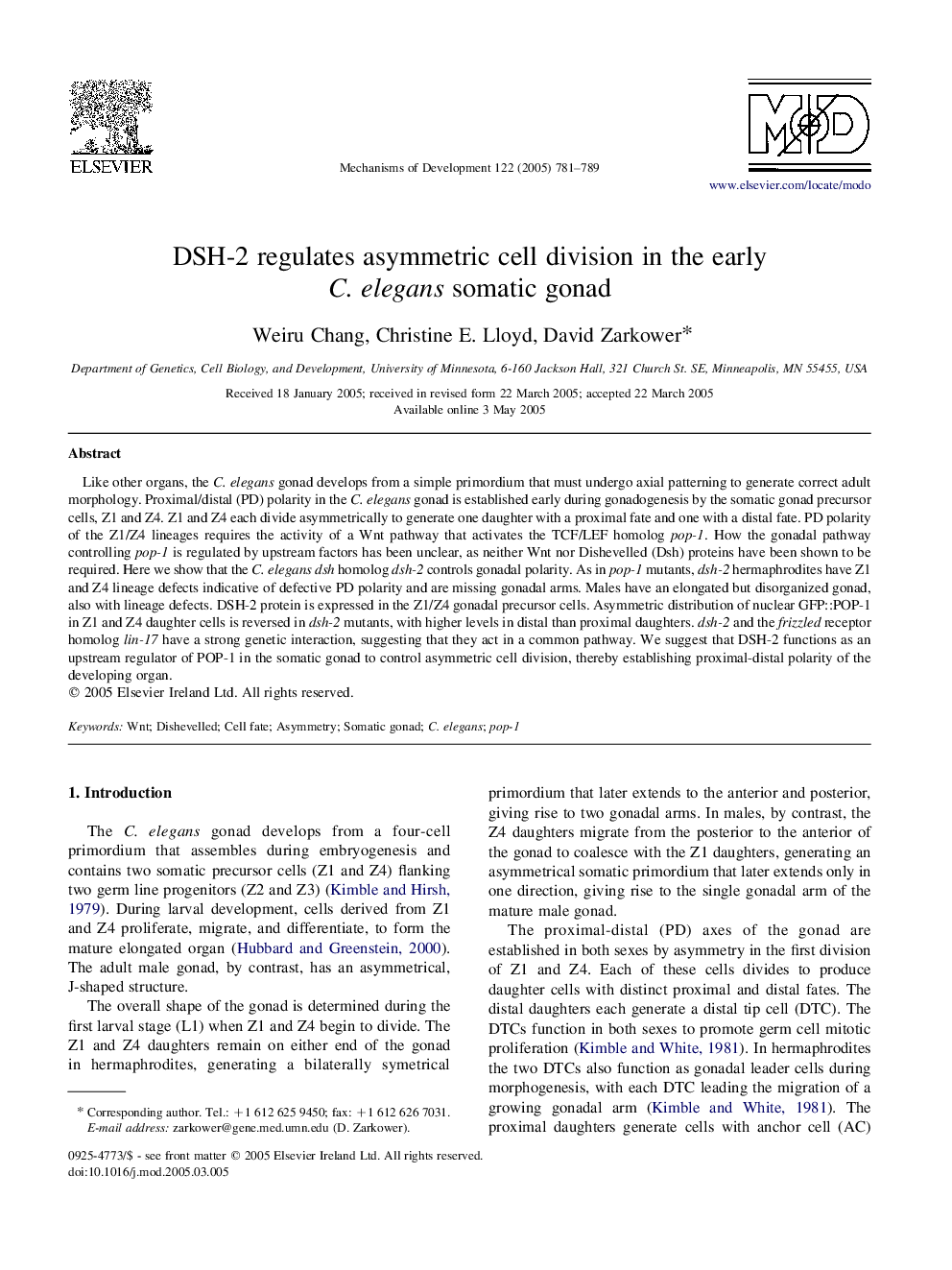| Article ID | Journal | Published Year | Pages | File Type |
|---|---|---|---|---|
| 9913638 | Mechanisms of Development | 2005 | 9 Pages |
Abstract
Like other organs, the C. elegans gonad develops from a simple primordium that must undergo axial patterning to generate correct adult morphology. Proximal/distal (PD) polarity in the C. elegans gonad is established early during gonadogenesis by the somatic gonad precursor cells, Z1 and Z4. Z1 and Z4 each divide asymmetrically to generate one daughter with a proximal fate and one with a distal fate. PD polarity of the Z1/Z4 lineages requires the activity of a Wnt pathway that activates the TCF/LEF homolog pop-1. How the gonadal pathway controlling pop-1 is regulated by upstream factors has been unclear, as neither Wnt nor Dishevelled (Dsh) proteins have been shown to be required. Here we show that the C. elegansdsh homolog dsh-2 controls gonadal polarity. As in pop-1 mutants, dsh-2 hermaphrodites have Z1 and Z4 lineage defects indicative of defective PD polarity and are missing gonadal arms. Males have an elongated but disorganized gonad, also with lineage defects. DSH-2 protein is expressed in the Z1/Z4 gonadal precursor cells. Asymmetric distribution of nuclear GFP::POP-1 in Z1 and Z4 daughter cells is reversed in dsh-2 mutants, with higher levels in distal than proximal daughters. dsh-2 and the frizzled receptor homolog lin-17 have a strong genetic interaction, suggesting that they act in a common pathway. We suggest that DSH-2 functions as an upstream regulator of POP-1 in the somatic gonad to control asymmetric cell division, thereby establishing proximal-distal polarity of the developing organ.
Related Topics
Life Sciences
Biochemistry, Genetics and Molecular Biology
Cell Biology
Authors
Weiru Chang, Christine E. Lloyd, David Zarkower,
